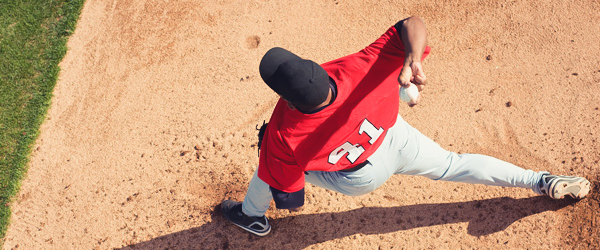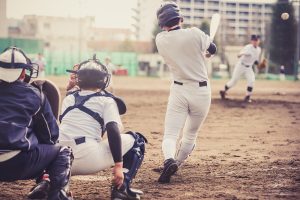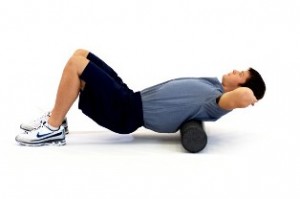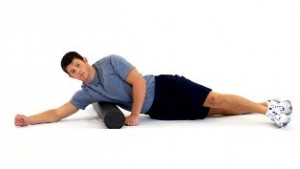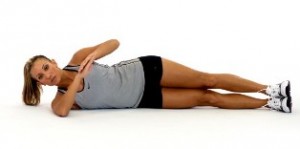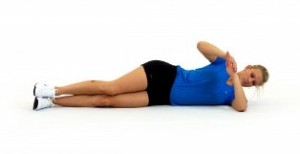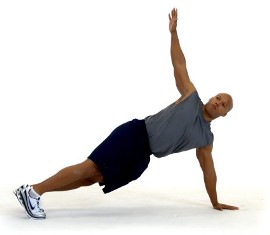How Important is Flexibility for Baseball?
Whether it’s the majors, minors or recreational leagues, as Stretching Coaches know, flexibility is an important yet sometimes overlooked and unstructured aspect of baseball training. See how a well-planned flexibility program can keep players throwing at their peak...all season long.
Stretching Techniques for the Baseball Player
It’s long been stressed that flexibility is one of the most important and beneficial parts of any sports-conditioning program. But despite its importance, it is frequently ignored by athletes in their physical conditioning programs, putting them at risk for injury. By implementing an integrated stretching routine, baseball players can increase multi-planar dynamic flexibility, thus helping to maintain healthy muscles and connective tissue, as well as reduce the risk of injury.
Provided that effective form and techniques are selected and applied, a properly planned flexibility program can promote soft tissue health and guard against damage (1,2). Many coaches and athletes currently use a general, non-specific flexibility approach. With this in mind, this program encompasses different forms of flexibility, along with a variety of stretching techniques, in a single regimen designed to produce optimum results.
The most common baseball injuries occur at the elbow and shoulder-usually due to poor technique, overuse, muscle imbalances, or inflexibility (1,3). The focus here will be on flexibility techniques that are specific to this area.
Integrated Techniques for the Baseball Player
Optimal flexibility allows joints to assume a balanced resting position; the joint surfaces are evenly loaded and less stress is placed on passive structures. When an imbalance is present, unequal muscle tone can potentially pull the joint out of alignment, resulting in faulty static and dynamic posture. Less-than-optimal resting length leads to-less-than optimal tension development. This alters the force output, leading to micro-trauma, and eventually macro-trauma.
As previously mentioned, some of the most common injuries sustained by baseball players occur at the elbow and shoulder due to muscle imbalances. A muscle imbalance occurs when an agonist is significantly stronger than its antagonist. With respect to muscle imbalances and baseball, large discrepancies in range of motion of internal and external glenohumeral rotation have been demonstrated at both a collegiate and professional level (3,4). It has also been shown that positional players exhibit limited glenohumeral internal rotation on the dominant side, compared to non-dominant, non-throwing arms (5). This is most likely due to the repetitive stresses that are placed on the shoulder by the eccentric forces of the throwing motion during deceleration of the upper extremity. Such repetitive stress can lead to altered length-tension relationships (posterior capsular and muscular tissues become tight/overworked), altered force-couple relationships (rotator cuff fatigue), and altered arthrokinematics (anterior humeral migration leading to medial and lateral elbow overstress), which in turn leads to poor neuromuscular output and sub-optimal technique (1).
With this common imbalance in mind, it is best to implement an integrated approach to improving glenohumeral internal rotation. However, because no imbalance is an isolated phenomenon, it is crucial that an athlete experiencing shoulder discomfort undergo a comprehensive movement assessment. Stretching tissues that already exhibit hypermobility can lead to greater impairment. Use the following regimen as an example of how to build an integrated program, remembering that the entire body must be assessed and addressed.
Integrated Flexibility Training
These techniques will start in the Corrective Flexibility category to address shoulder imbalances and conclude with Functional Flexibility to prepare the player for the remainder of the conditioning program.
In the Corrective Flexibility category, Figures 1 through 4 below describe self-myofascial release (SMR), static stretching (SS), and active stretching (AS) techniques to increase glenohumeral internal range of motion respectively. First, SMR is used to inhibit overactive muscles. This is followed by SS, and AS.
Stretches for Baseball Players
- Place foam roll perpendicular to thoracic spine while relaxing head in hands.
- Inhale deeply, then exhale while conforming to the contour of the bio-foam roll (toward the floor).
- If stiffness is felt, hold for approx. 3 sec. before moving upward to the starting position via abdominal contraction.
- Repeat sequence throughout the thoracic spine.
Remember: This is a relaxation exercise used to improve mobility in the thoracic spine. Relax!
- Lying on your side, place foam roll under armpit as depicted.
- Position body more posterior in order to place tolerable static compression on the teres minor and infraspinatus.
- Be sure the humerus is not internally rotated as the rotator cuff and sub acromial tissues (biceps tendon, subacromial bursae) can become impinged between humerus and the undersurface of the acromion, coracoacromial ligament or both.
If static compression irritates the shoulder complex, discontinue immediately.
- Lie on your side with your shoulder and elbow bent at a 90-degree angle - your forearm should be in a vertical position. Using your opposite hand, slowly bring your forearm parallel to the ground until a stretch is felt in the back of your shoulder.
- Using your opposite hand, slowly bring your forearm parallel to the ground until a stretch is felt in the back of your shoulder.
- Hold for 30-seconds.
- Lie on your side with your shoulder and elbow bent at a 90-degree angle - your forearm should be in a vertical position. Using your opposite hand, slowly bring your forearm parallel to the ground until a stretch is felt in the back of your shoulder.
- Using your opposite hand, slowly bring your forearm parallel to the ground until a stretch is felt in the back of your shoulder.
- Hold for 1-2 seconds and repeat.
Following this integrated sequence, we move on to Functional Flexibility, utilizing the dynamic stretching (DS) technique depicted in Figure 5. This technique capitalizes on the neurophysiological principle of reciprocal inhibition while adjusting the speed to meet the player's athletic demands.
- Begin in a push-up position with feet together and your toes on the floor. Place your hands slightly wider than shoulder-width apart.
- Draw-in your navel and contract your glutes. With your back remaining flat, slowly lower your body toward the floor, lowering and contracting your shoulder blades.
- Push up to the starting position and rotate your body 90-degrees from the floor, fully extending both of your arms, one in the air and the other stabilizing on the floor. Reverse the movement of rotation and return to starting position. Repeat, alternating the direction of rotation.
Programming Variables
Listed below are general programming variables for all stretching techniques described. Be sure to modify duration, intensity, and frequency according to the individual needs of your players.
| Technique | Duration | Frequency | Intensity |
| 1. SMR | 30 sec. per tender area | 5-10 minutes pre and post conditioning | Low |
| 2. Static Stretching | 30 sec. hold | 1-3 repetitions | Low |
| 3. Active Stretching | 1-2 sec. hold | 5-10 repetitions | Low |
| 4. Dynamic Stretching | 1 sec. | 10-15 repetitions each | Moderate to High |
Many forms of flexibility and many stretching techniques are used in the performance world. Each has a purpose and can be useful if applied properly. The key is to select and apply techniques in a systematic fashion while bearing in mind that form should be the limiting factor to any progression. By following an integrated approach, as opposed to an isolated one, the performance professional can effectively take the guesswork out of "which stretch is best."
References
- Clark MA, Lucett SC. NASM Essentials of Sports Performance Training. Burlington, MA, Jones and Bartlett Learning; 2019.
- Clark MA, Parracino L. Advanced integrated flexibility course manual. National Academy of Sports Medicine; 2003.
- Dines JS, Frank JB, Akerman M, Yocum LA. Glenohumeral Internal Rotation Deficits in Baseball Players With Ulnar Collateral Ligament Insufficiency. Am J Sport Med. 2009; 37(3): 566-570.
- Bigliani LU, Codd TP, Connor PM, et al. Shoulder motion and laxity in the professional baseball player. Am J Sports Med 1997;25(5):609-613.
- Brown LP, Niehues SL, Harrah A, et al. Upper extremity range of motion and isokinetic strength of the internal and external shoulder rotators in major league baseball players. Am J Sports Med 1988;16(6):577-585.

